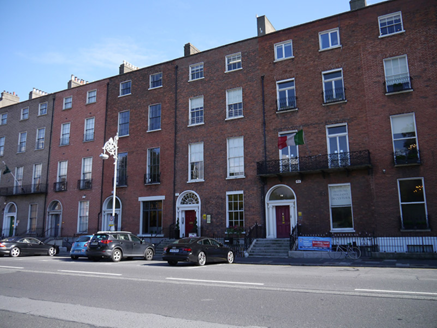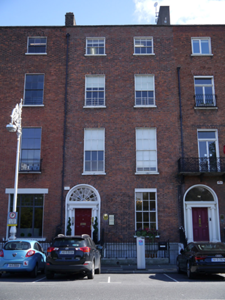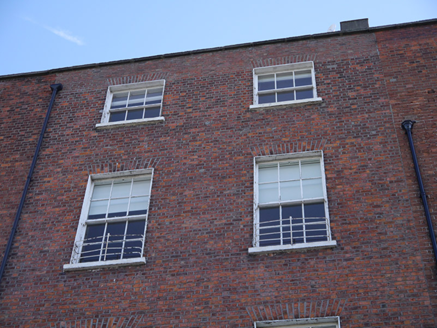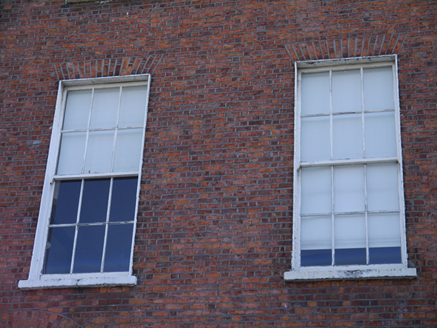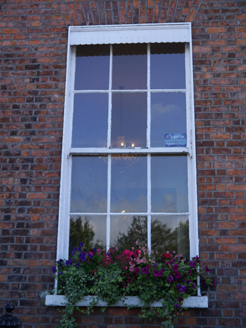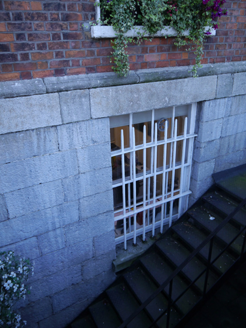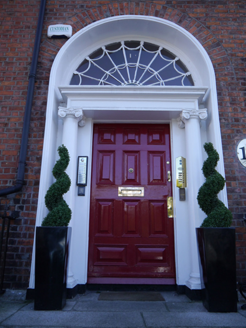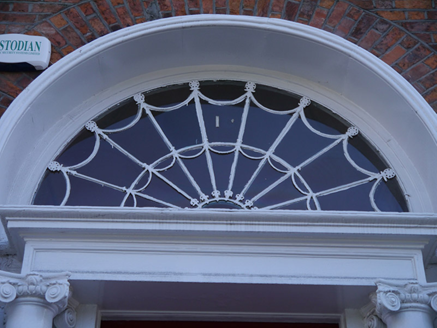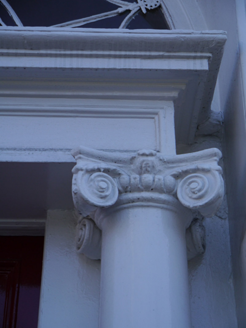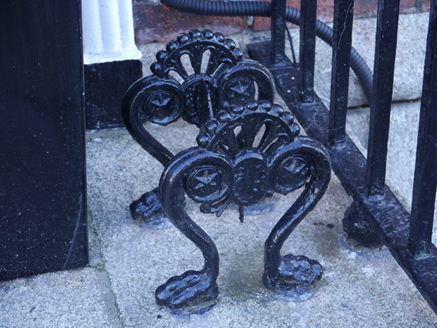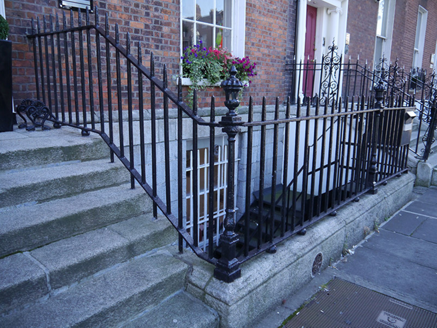Survey Data
Reg No
50930121
Rating
Regional
Categories of Special Interest
Architectural, Artistic
Original Use
House
In Use As
Office
Date
1815 - 1825
Coordinates
316578, 233021
Date Recorded
24/09/2015
Date Updated
--/--/--
Description
Attached two-bay four-storey over basement former townhouse, built c. 1820, with two-stage return to rear (east). Now in use as offices. Pitched roof to west span, irregular M-profiled hipped roof to east, concealed by refaced brick parapet with granite coping. Pair of rendered chimneystacks to south party wall and red brick chimneystacks to north part wall, with replacement clay pots. Parapet gutters with uPVC downpipe and hopper to north side. Red brick walling laid in Flemish bond over coursed and tooled ashlar limestone walling to basement beneath granite plinth course. Square-headed window openings with brick voussoirs, patent reveals and masonry sills. Wrought-iron guard rails to second floor openings and cast-iron grille to basement opening. Largely six-over-six timber sliding sash windows with profiled horns, three-over-three to third floor and original eight-over-eight to basement without horns. Round-headed door opening with brick voussoirs, moulded reveals and recessed rendered surround containing prostyle portico with panelled frieze and moulded cornice carried on Scamozzian-Ionic columns over plinth stops, cobwebbed iron fanlight and raised-and-field timber panelled door. Granite entrance platform with cast-iron boot scraper, approached by six granite steps flanked by iron railings with decorative cast-iron corner posts on granite plinth, enclosing basement to south-side. Steel steps to basement level. Coal-hole cover to pavement. Two-storey modernised mews building to rear plot. Recent red brick wall to east boundary on Lad Lane with vehicular and pedestrian openings.
Appraisal
Mary Bryan (2006) attributes the building of Nos. 9-12 to Nathaniel Calwell. No. 10 forms part of a relatively intact late-Georgian streetscape with a good Ionic doorcase and fanlight. Casey (2005) refers to a stucco eagle centrepiece in the entrance hall. There is a similar detail in Nos. 7, 41, 60 and 68. Laid out in 1791 by the surveyors J & P Roe, Fitzwilliam Square was the last of the city’s Georgian squares to be completed. Development was staggered, progressing slowly until after the Napoleonic Wars, and the vast majority of houses were completed on the eastern side of the square between 1816-22. Although largely homogeneous in character and form, the subtle variations between terraces are indicative of the speculative nature of the Square’s development.
